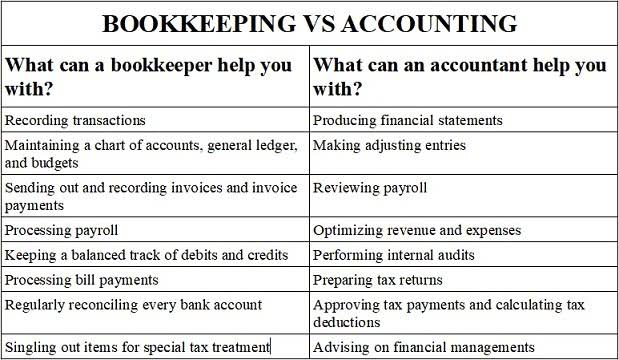
And a single-solution software for nonprofits like Funraise can help you do it all when it comes to your fundraising, facilitating donor stewardship, improving fundraising efforts, and enhancing your donor relationships. With all that info in one place, getting those numbers down on paper becomes much, much easier. Nonprofit accounting rules are all about that accountability, so you’ll want to establish internal controls to prevent fraud and ensure everything is by the book. Regular financial reviews, clear approval processes for expenses, and, of course, secure software.
Assess Potential Risk Impact
It is not necessarily earmarked, and it can be spent in any way management sees fit. In a nonprofit, however, some of your inflowing money is categorized as restricted funds, which means you can only spend those funds on the items that the donor or grant specifies. Every nonprofit should have a reserve fund or rainy day fund that allows them to prepare for emergencies, unexpected challenges, and economic downturns. Aim to keep enough money in your reserve fund to cover about 6-12 months’ worth of your standard operating costs. This way, you’ll have a solid foundation to carry you through any changes that are out of your control. US treasury bills are highly liquid, government-secured investments that typically offer high returns if you hold them until maturity.

Leveraging Technology for Advanced Financial Reporting
The Direct Method of preparing the Statement of Cash Flows has distinct advantages for nonprofit organizations, particularly in enhancing financial transparency and stakeholder trust. This method provides a clear and detailed view of cash inflows and outflows, which is crucial for nonprofits dependent on timely cash receipts from donations, grants, and fundraising activities. By directly listing cash transactions, the Direct Method offers a more intuitive understanding of an organization’s liquidity—essential for both day-to-day operations and long-term planning. Effective cash management is pivotal, as it ensures that these entities can fulfill their missions while remaining financially solvent and accountable to stakeholders. These controls involve monitoring income and expenses regularly, ensuring accurate and timely recording of financial transactions. Using tools like cash flow statements helps track the timing and magnitude of cash inflows and outflows.
- When a donor pledges an annual gift to your organization, ask them whether they’d be willing to drop a zero and give that amount monthly.
- A nonprofit investment advisor can help you implement these measures, especially when it comes to developing cash management policies.
- Cash management is essential for maintaining financial stability, complying with regulations, and ensuring effective decision-making.
- At the end of each business day, the cash held in an organization’s operating account is swept into an interest-bearing account.
- When preparing cash flow statements, nonprofits have the option to use either the Direct Method or the Indirect Method.
Regulatory Compliance
Yet what many of their commercial sector colleagues fail to realize is that things aren’t so straight forward. Each of these options, deposits, savings, and leveraging IntraFi through banks that offer it, allow nonprofits to maximize their earnings all while insuring their deposits. As a refresher, we’ve included high-level information on a few key types of bank accounts. At Achievement First, one of our school networks has a sizable excess cash balance. Our finance team created a waterfall spreadsheet that calculates excess liquidity (cash beyond upcoming needed liquidity), and we are investing nonprofit cash flow statement that cash in U.S. Neil Shah has been a non-profit CFO at various organizations for almost 20 years.

simple but effective cash flow management strategies for nonprofits
This example shows how each type of activity contributes to the overall cash flow of the organization, providing stakeholders with a clear picture of its financial dynamics. The use of detailed data helps to clarify the direct impacts of various transactions on the nonprofit’s cash position. Choosing to implement the Direct Method can significantly impact a nonprofit’s ability to manage its finances effectively, contributing to greater operational efficiency and accountability. Propel Nonprofits has developed a cash flow projection template, an Excel spreadsheet that can be downloaded at propelnonprofits.org. As with all financial reports, the usefulness of cash flow projections hinges on the accuracy of the information used.

Let’s dive deeper into the captivating world of nonprofit accounting and unravel the intriguing distinction between accounting and bookkeeping in the nonprofit world. Bookkeeping and accounting may seem similar at first glance, but don’t be fooled! These two concepts are actually worlds apart, and grasping their distinctions will revolutionize the way you delegate responsibilities within your team—and the way you budget for impact.
- Your nonprofit’s budget is like a financial compass, leading you through the twists and turns of expenses and projected actual revenue for the year.
- This would increase the total donation you receive by 20% while also helping to create a recurring, regular revenue stream to improve your nonprofit’s cash flow.
- We support many nonprofit organizations in building budgeting models, providing an objective view that gives nonprofits clarity over their best path forward.
- Develop a flexible budget that can adapt to changing circumstances, and involve key stakeholders in the budgeting process.
- For example, a well-thought-out nonprofit risk management plan can prevent financial shortfalls by accounting for potential funding gaps.
Another important tip to keep in mind when what are retained earnings managing finances at a nonprofit is to secure funding from multiple sources rather than relying on just one or even two sources. This way, if a donor drops out for any reason, the organization will still have enough funding to continue without operations being significantly affected. This serves as a form of independent validation, ensuring accuracy, transparency, and adherence to best practices. A second set of eyes can identify potential errors, inconsistencies, or irregularities that might have been overlooked internally.
Cash Flow Template
You’re saving the sloths, building homes for the houseless, and curing the climate crisis. But while being a crusader for justice sounds pretty action-packed on paper, the reality is a bit less glamorous. In fact, one of the most important facets of a healthy nonprofit organization is good nonprofit accounting practices.
Donors Interested in Gifting Private Shares to Nonprofits: A Guide
The aforementioned State of the Sector survey showed fewer than 25% had more than a six-month cash reserve. In 2019, research found nonprofits that were transparent about their expenditure received more contributions and were stronger organizations than those that didn’t. As any organization leader or major gift officer who has Accounting for Churches found themselves in this situation will likely tell you, this withholding of information is usually the result of a deep-seated fear. There’s a concern that major backers will withdraw support if they knew the truth about operational costs. Understanding the timing and extent of your cash balance needs helps you to plan for periods of heavy spending. In order to do that effectively, however, you first need to understand where the money is coming from.
